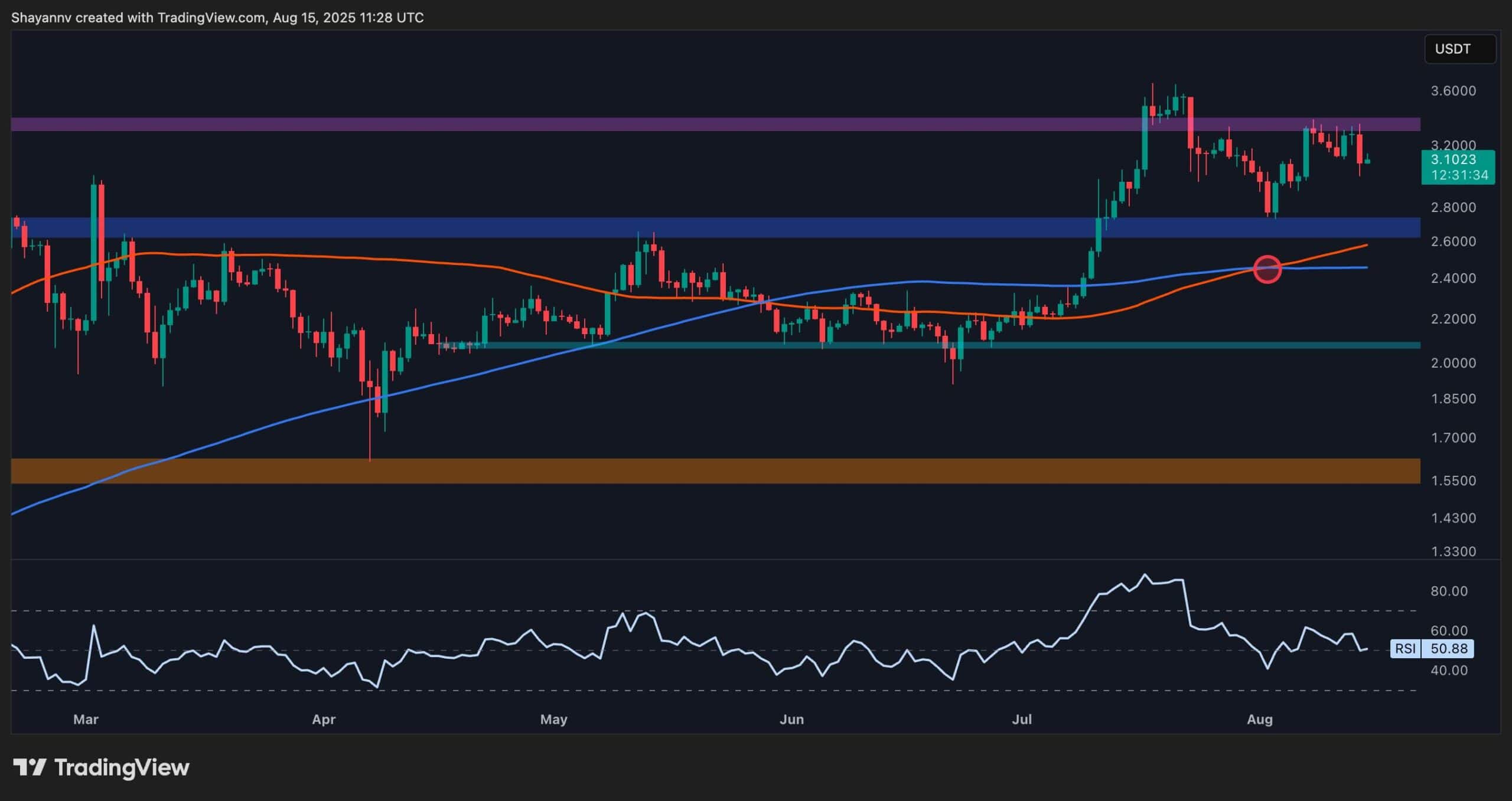Cryptocurrency
Human-readable code: Why branding is the programming language of humans

For too many Web3 projects, marketing is often an afterthought. The prevailing wisdom is that a visionary founder will generate a killer idea that will get VCs frothing, use their funding to hire a superstar developer (or an entire team of them) and bring the vision to life via the medium of code.
Once there’s a minimum viable product (MVP) to showcase, the project needs a user base to make this thing into a viable product. At this point, it’s time to fire up the Magical Marketing Machine, which connects to your various channels to create a nonstop value-generating stream of leads and conversions, drawn in by the irresistible lure of the initial killer idea. Once they hear about it.
This mindset isn’t helped by the stories of often inexplicable viral success that regularly punctuate the crypto headlines. But viral success isn’t the same as success. Just look at Terra’s LUNA collapse, the Squid Game scam or SafeMoon’s pump and dump for several relatively recent examples of viral “success.”
Of course, a few exceptional viral cases have managed to achieve longevity. For instance, Bored Ape Yacht Club and SushiSwap are two examples of projects that leveraged initial viral success to attain long-term recognition.
There is no formula or algorithm to guarantee viral success. But marketing, as a value-generating function of a commercial organization, is different. It has a toolkit at its disposal, and the most powerful of those tools is the brand — the programming that conveys the message of an offering to a human audience.
Effective branding relies on good code
Successful firms know that branding and marketing don’t happen by magic or according to checklist-type formulae. When it’s planned and executed well, a robust branding strategy is analogous to computer code. Blockchain developers use programming languages to translate their applications into a set of instructions that the blockchain can execute consistently. The branding strategy tells everyone in an ecosystem what messages they should be using and how to deliver them in a way that’s comprehensible and engaging.
Programming involves choosing the correct syntax and functions to generate a particular outcome efficiently, while branding involves selecting messaging that resonates and choosing the most effective ways to convey it. Solidity is Turing-complete, in that it can be used to program virtually any task. In this sense, branding as a programming language is also Turing-complete, as it can be used to craft any message you choose.
Beyond text, which already contains all the richness of tone and language, you send a message with every choice in the presentation of your offering, from colors and logos to advertising outlets and collaboration partners. Every nuance conveys the messages of your brand that will be decoded and disseminated by the world.
This is where you must beware. A Turing-complete language can also easily create unintended consequences. In blockchain terms, a bug in the code, a typo or an unknown eventuality created by an attacker may result in hacks, stolen funds and a loss of good reputation.
Marketing gaffes — a result of anyone being able to go out there and say whatever they like — can end up as PR disasters. No stolen funds, but irreparable damage to your brand will quickly hit your revenue source with precisely the same net result.
But more often than not, the worst outcome of bad branding is a massive loss of opportunity. Do you want to maximize the impact of your marketing budget? Start with your brand and its strategy.
A critical success factor or an afterthought?
It’s time for a mindset shift. Your branding is your product. After all, without recognition, the most amazing invention in the world is not a product — it’s just something someone dreamed up.
Despite the fact that branding is unquestionably a pivotal factor in commercial success, it’s baffling that Web3 founders tend to treat it as an afterthought. I’ve come across projects due to launch next month, where basic marketing planning is only just underway. I’ve also seen projects where the team is operating entirely on junior staffers with little prior experience in Web3 or marketing — let alone developing a brand from scratch.
It’s hard to imagine any founder leaving their programming to chance. How will the app perform if the only programmer has a high-school knowledge of coding? Or, what kind of quality could a star team of coders produce, given only a month for building and testing?
The more extensive and sophisticated the underlying code, the more powerful and impactful the technology. The same applies to branding.
Evaluating your stack
Ultimately, my message to Web3 founders is to examine your current branding approach and consider whether it accurately reflects the image you want your project to convey.
This may mean reexamining your overall strategy. For instance, is there a clear and consistent set of brand messages that forms the basis of all communications?
Are you confident that your marketing plans are rooted in the best possible practices for your offering and audience, and not simply a checklist of channels and touchpoints?
You may also need to evaluate time allocated to marketing and branding activities. Are there sufficiently available person-hours to generate interest and engagement ahead of a launch?
Assessing your approach may also involve evaluating your marketing talent and leveraging expertise as required. Do you have the right skills on board to develop and execute a branding strategy?
Finally, does your plan allow for activities such as testing campaign materials with target audiences or refining messages on different channels?
It’s true that all of the above activities will take time and effort and may uncover a need to invest further. But once your branding code is as robust and rigorous as your product code, you’ll already be ahead of the competition.
German is co-founder and chief relevance officer of THE RELEVANCE HOUSE, a branding and marketing agency focused on blockchain and Web3.
This article was published through Cointelegraph Innovation Circle, a vetted organization of senior executives and experts in the blockchain technology industry who are building the future through the power of connections, collaboration and thought leadership. Opinions expressed do not necessarily reflect those of Cointelegraph.
Cryptocurrency
Ethereum Foundation, Whales, and Hackers: What’s Driving the ETH Sell-Off?

TL;DR
- Whales, hackers, and the Ethereum Foundation wallets moved over $500M in ETH through large sales and withdrawals.
- Ethereum transfers rose to 4.6M ETH, nearing the monthly high of 5.2M recorded in July.
- Staking inflows hit 247,900 ETH, the highest in a month, locking more supply from trading.
Large Withdrawals and Whale Activity
Ethereum (ETH) has seen heavy movement from major wallets over the past few days. On-chain data from Lookonchain shows a newly created wallet pulled 17,591 ETH, worth $81.62 million, from Kraken in just two hours.
Over three days, two new wallets withdrew a combined 71,025 ETH, valued at $330 million, from the exchange.
One of these wallets, address 0x2A92, has withdrawn 53,434 ETH, worth $242.34 million, in two days. This includes a recent purchase of 30,069 ETH, valued at $138.46 million, during a market drop.
Major ETH Holders Offload Millions Amid Price Rally
In contrast, several separate entities have been disposing of some ETH holdings. A wallet tied to a hacker address 0x17E0 sold 4,958 ETH for $22.13 million at $4,463, securing a profit of $9.75 million. Earlier this year, the same address sold 12,282 ETH at $1,932 and later bought back part of the amount at higher prices.
A different whale sold 20,600 ETH for $96.55 million over the past two days, generating a profit of more than $26 million after holding the position for nine months.
Meanwhile, an Ethereum Foundation-linked wallet, 0xF39d, sold 6,194 ETH worth $28.36 million in the last three days at an average price of $4,578.
Recent sales from the same wallet included an additional 1,100 ETH and 1,695 ETH for over $12.7 million combined.
The #EthereumFoundation-linked wallet(0xF39d) sold another 1,300 $ETH($5.87M) at $4,518 ~11 hours ago.
Over the past 3 days, this wallet has sold a total of 6,194 $ETH($28.36M) at an average price of $4,578.https://t.co/4hfCWymHVG pic.twitter.com/ErUyEY8SJy
— Lookonchain (@lookonchain) August 15, 2025
Network Activity on the Rise
CryptoQuant data shows Ethereum’s total tokens transferred have been climbing since August 9. After ranging between 1 million and 3 million ETH through late July and early August, transfers have risen to 4.6 million ETH, approaching the monthly high of 5.2 million recorded in mid-July. This increase has occurred alongside a price rally from about $3,400 to $4,600.
Interestingly, staking inflows generally stayed between 20,000 and 80,000 ETH per day over the past month. On August 14, inflows jumped to 247,900 ETH, the highest in the period.
At the time, ETH was trading near $4,600. Large staking deposits reduce the amount of ETH available for immediate trading, as staked coins are locked for a set period.
In the meantime, ETH trades at $4,647 with a 24-hour volume of $68.25 billion, down 2% on the day but up 19% over the week.
Binance Free $600 (CryptoPotato Exclusive): Use this link to register a new account and receive $600 exclusive welcome offer on Binance (full details).
LIMITED OFFER for CryptoPotato readers at Bybit: Use this link to register and open a $500 FREE position on any coin!
Cryptocurrency
Massive DOGE Whale Activity Hints at $1 Breakout

TL;DR
- Whales bought two billion DOGE this week, lifting their combined holdings to 27.6 billion coins.
- A single 900M DOGE transfer worth $208M to Binance drew attention to large exchange movements.
- DOGE broke key resistance, with momentum building for a possible push toward the $1 price mark.
Price and Market Moves
Dogecoin (DOGE) traded at $0.23 at press time, slipping 4% over the past day but still showing a 2% gain for the week. Daily turnover came in at about $6.18 billion.
Meanwhile, the broader crypto market saw over $1 billion in liquidations. Hotter-than-expected US Producer Price Index data pushed traders to scale back expectations of a near-term Federal Reserve rate cut. DOGE had roughly 290,500 coins liquidated during the sell-off.
On the two-week chart, analyst Trader Tardigrade notes that DOGE has cleared a downward-sloping resistance line after completing what appears to be a “wave V” in an Elliott Wave sequence. Similar setups in the past, where prolonged declines stayed within falling channels before breaking higher, have been followed by sharp rallies.
$Doge/2-week#Dogecoin is gaining strong momentum to surge above $1 pic.twitter.com/TuSEKr19nv
— Trader Tardigrade (@TATrader_Alan) August 15, 2025
Momentum gauges are also turning up. The Stochastic RSI, which had dropped into oversold territory, is now heading higher. Previous reversals from this zone have coincided with sustained upward moves. The current formation points to a possible run that could carry DOGE past the $1 mark.
Heavy Whale Buying and Large Transfers
As reported by CryptoPotato, blockchain data shows large investors have added two billion DOGE in the past week, spending just under $500 million. That brings their holdings to about 27.6 billion coins, or 18% of the supply. The buying streak has prompted speculation within the community.
Recently, Whale Alert flagged a 900 million DOGE transfer worth about $208 million into Binance. The tracking indicates that it originated from a wallet connected to the exchange, likely as an internal activity. The address involved holds 2.88 billion DOGE, one of the largest balances on the network.
Ali Martinez also reports that transactions above $1 million reached a one-month high, with activity building since early August and peaking as DOGE traded at $0.25.
Whales are back! Dogecoin $DOGE activity at a 1-month high. pic.twitter.com/C83Pv68mCt
— Ali (@ali_charts) August 14, 2025
Sentiment Building
Analyst Gordon described the current setup as “a nice bit of consolidation” before a potential breakout, adding,
“This will be one of the first coins normies FLOCK to & the pump will be MASSIVE.”
With whale accumulation rising, high-value transfers increasing, and a bullish technical pattern in play, DOGE is positioned for a potential push toward $1 if momentum holds.
Binance Free $600 (CryptoPotato Exclusive): Use this link to register a new account and receive $600 exclusive welcome offer on Binance (full details).
LIMITED OFFER for CryptoPotato readers at Bybit: Use this link to register and open a $500 FREE position on any coin!
Cryptocurrency
Ripple Price Analysis: XRP at Risk as Key Support Levels Could Trigger Sharp Drop

XRP has recently entered a consolidation phase after a strong rally earlier this summer, with the price action now hovering around key resistance levels on both its USDT and BTC pairs. Yet, while momentum has slowed, the charts still indicate a generally bullish structure, with multiple key support levels remaining firmly in place.
Technical Analysis
By ShayanMarkets
The USDT Pair
On the XRP/USDT daily chart, the price is currently trading near the $3.10 mark, facing a strong resistance zone around $3.40. This follows a breakout above the $2.70 range in July, which has now flipped into a support area.
Both the 100-day and 200-day moving averages are also trending upward and recently formed a bullish crossover around $2.45, reinforcing the medium-term bullish sentiment. If the $3.40 resistance breaks, a push toward the critical $4.00 range becomes likely.
However, the RSI hovering near the neutral 50 level suggests a lack of strong momentum for now, meaning a short-term pullback into the $2.80 support zone is still possible.
This zone will be key for maintaining the bullish structure. Losing it could open the door for a deeper correction toward the 200-day moving average located around the $2.40 mark. Yet, as long as the price stays above the moving averages, the broader trend remains bullish.
The BTC Pair
Looking at the XRP/BTC chart, the pair has recently pulled back after hitting the 3,000 SAT resistance, with the price currently around 2,600 SAT.
This follows a clean breakout above the long-term descending channel and a successful retest of its upper boundary, which coincided with the 200-day moving average and the 2,400 SAT support zone. This confluence remains a key bullish technical factor, as holding above it could attract renewed buying pressure.
That said, RSI levels around 48 show that momentum has cooled after the sharp July rally, meaning XRP may continue ranging between 2,400 SAT and 3,000 SAT in the near term. A decisive close above 3,000 SAT would likely open the path to the 3,400 SAT zone, while losing 2,400 SAT could shift the bias back toward 2,000 SAT support. For now, the structure still favors the bulls as long as higher lows remain intact.
Binance Free $600 (CryptoPotato Exclusive): Use this link to register a new account and receive $600 exclusive welcome offer on Binance (full details).
LIMITED OFFER for CryptoPotato readers at Bybit: Use this link to register and open a $500 FREE position on any coin!
Disclaimer: Information found on CryptoPotato is those of writers quoted. It does not represent the opinions of CryptoPotato on whether to buy, sell, or hold any investments. You are advised to conduct your own research before making any investment decisions. Use provided information at your own risk. See Disclaimer for more information.
Cryptocurrency charts by TradingView.

 Forex3 years ago
Forex3 years agoForex Today: the dollar is gaining strength amid gloomy sentiment at the start of the Fed’s week

 Forex3 years ago
Forex3 years agoUnbiased review of Pocket Option broker

 Forex3 years ago
Forex3 years agoDollar to pound sterling exchange rate today: Pound plummeted to its lowest since 1985

 Forex3 years ago
Forex3 years agoHow is the Australian dollar doing today?

 Cryptocurrency3 years ago
Cryptocurrency3 years agoWhat happened in the crypto market – current events today

 World3 years ago
World3 years agoWhy are modern video games an art form?

 Commodities3 years ago
Commodities3 years agoCopper continues to fall in price on expectations of lower demand in China

 Economy3 years ago
Economy3 years agoCrude oil tankers double in price due to EU anti-Russian sanctions





















